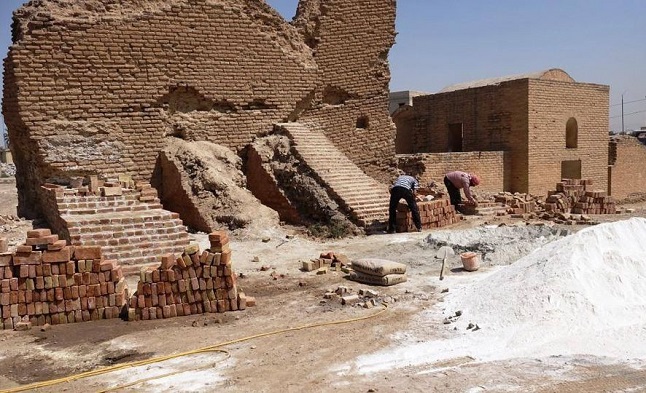(Zaman Al Wasl)- Local archeologists have warned against the use of black cement in the restoration of archeological sites in northeastern Raqqa province.
Omar al-Buniya, a journalist and expert in archeology, expressed his concerns about the restoration of Qasr al-Banat and the Ancient Wall in a way that does not observe international standards and specifications of the restoration of brick buildings. Usually, this type of building is restored using brown plaster mixed intermittently in medium-sized pots and not cement and white sand. He insisted that only plaster should be used between bricks, while preserving the color.
The Autonomous Administration has carried out other restorations in other archaeological sites, including Tal Baidar, north of Hasakah.
Abdul Ghafour al-Khalaf, head of the Culture and Art Committee of the Civil Council of Raqqa, had previously announced that they had started restoring the southern and northern part of Qasr al-Banat using gypsum (plaster) and brick.
Al-Khalaf said that the emergency restoration came after one of the southern arches and walls were cracked, and that the process is taking place under the supervision of experts and consultants in the field.
In a statement to Kurdish media, archeology and museum expert Muhammad Ezzo said that about 1,000 broken pottery pieces need restoration by specialists before being displayed in the Museum of Raqqa, which has been lacking artifacts to display since its renovation. The museum, which was damaged by the bombing and the battles that took place in the region, contained more than 7,000 artifacts in 2011.

Zaman Al Wasl
















Comments About This Article
Please fill the fields below.